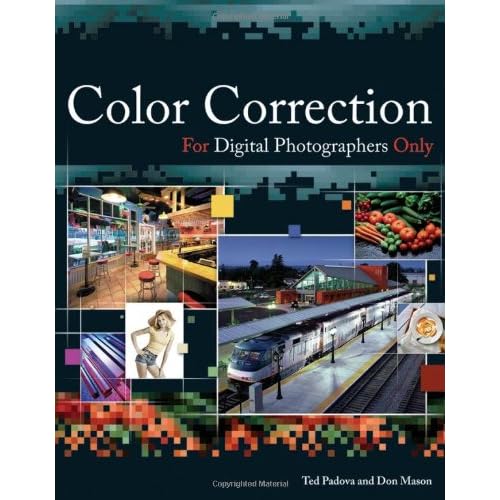Color Correction For Digital Photographers Only (For Only)
Category: Books,Arts & Photography,Photography & Video
Color Correction For Digital Photographers Only (For Only) Details
Review "Avoid colour crisis with this marvellous manual…The Q&A sections are also very handy, giving succinct answers to common queries." (Photoshop Creative, September 2006) Read more From the Back Cover Color is the soul of the image. It deserves perfection. Whether you're a professional or a serious amateur, you recognize the importance of color. This book is about perfecting color at every level, from setting up a shot to editing the image to printing. Illustrated with the spectacular photography of coauthor Don Mason, this volume doesn't rehash the Photoshop® basics you already know. Instead, it shares professional methods and color correction techniques designed to reveal the soul of your subjects and the art in your images. Understand color modes, bit depth, and dynamic range Create an optimum color environment with controlled lighting, monitor calibration, and color output profiles Make the best use of Camera Raw and Adobe® Bridge Correct tone and brightness and sharpen images Remedy the effects of improper exposure on color Explore the artistic options of black-and-white editing Achieve image, camera, and printer resolution for professional-quality prints Increase dynamic range by merging images. Learn methods for getting perfect skin tones. Add color tints to improve tonal ranges. Read more About the Author Ted Padova first began his interest in amateur photography as a Peace Corps Volunteer in Venezuela. He toured five Latin American countries, collecting shoeboxes of slides he hopefully will one day sort out. Upon completion of his two-year Peace Corps tour, he attended the New York Institute of Photography in Manhattan when it was a resident school, earning a diploma in Commercial Photography. He worked his way through undergraduate and graduate school professionally shooting weddings and portraits. Although many people laugh at his Honeywell Strobonars, he realizes he could never have completed his higher education without them. In 2004 he retired from his Digital Imaging Service Bureau and Custom Photo Finishing Lab after 15 years of owning and operating three facilities. He has authored over 20 computer books on Adobe Acrobat, Adobe Photoshop, Adobe Photoshop Elements, and Adobe Illustrator. Today he spends his time writing and speaking nationally and internationally on Acrobat PDF and digital imaging. When not writing or speaking he can be found walking the beaches or sailing around his home in Waikiki in Honolulu, Hawaii. Ted can be reached at ted@west.net. Don Mason is a graduate of Brooks Institute of Photography in Santa Barbara, California. He has been a professional photographer for more than three decades and works in virtually every aspect of commercial photography. Don first started using a computer in 1999 when he didn’t believe that digital imaging would ever replace his wing lynch system used for processing all his E-6 film and his darkroom where he made his own C-prints. After four years of intensive work in Adobe Photoshop, he abandoned his analog film lab and went completely digital. Today he divides his time between shooting professional commercial photography and printing art prints for a wide range of clients on his two oversized Epson inkjet printers. Don can be reached at Dmason5849@aol.com. Read more

Reviews
One of the other reviewers rated this book as only 1 star because it gives instructions for adjusting colors specifically for Adobe Photoshop CS2, and that is a much outdated version of Photoshop. However, I don't see this as a big problem. If you are familiar with later versions of Photoshop, I don't think you will have any problem "translating", or updating, the instructions to whichever later version of Photoshop you use. And, of course, all the valuable and (relatively) easy to understand information on color theory, ICC profiles, etc. are valid and unchanging no matter which version of Photoshop you use. However, for me, personally, there are seven pages in this book (107 through 113) that all by themselves justify the price of the book. These pages describe how to use Photoshop's Curves adjustments to make 6 common tonal adjustments. I have read many other books and articles that say in order to realize the full potential of Photoshop, you have to understand and use Curves. But, until I read the simple instructions on those pages, I have never fully grasped how easy it is to use Curves to make tonal adjustments in Photoshop. I highly recommend this book for anyone who wants to gain a better understanding of how to adjust colors and tones in Photoshop.


